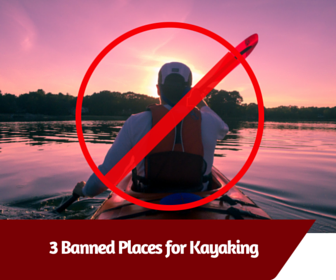Ban in Norway
In 2013, a ban on the 3 rivers of Norway was taken effect due to the increase spread of salmon parasite namely as Gyrodactus Salaris. The partial restriction will lead to fining of stubborn kayakers, whatever the race might be. The parasite spread involve was caused by kayakers themselves, fisherman and everybody else who brings contaminated waters in between the rivers. From its harmful effects to the health of the nearby residents the Food Department of Norway alongside the Norwegian paddle Federation works hand in hand to distribute information and disinfection system to avoid any major harm. The rivers are still available for kayakers but with assurance and aid of the kayaks used to be disinfected. If not considered thoroughly, full restriction of the rivers will be effective immediately.
Ban in Venice
Venice is popularized by the Grand Canal, it is the longest canal or artificial river in the world and it is also banning kayaking activity as well as other paddling activities effective on the tenth day on the issuance of the publication date on April 9 of this year. Due to severe traffics, they’ve concluded on having moderation on the rules for paddling in Venice.
The exact text in the new rules is this:
Nei Rii principali interni di collegamento: Canal Grande, Cannaregio, Giardini, Greci – San Lorenzo, – Santa Giustina – Sant’Antonin – Pietà, Noale, Novo, Ca’ Foscari, Santi Apostoli – Gesuiti, è vietata nei giorni feriali, dal lunedi al venerdì dalle 08.00 alle ore 15.00, e al sabato dalle ore 8.00 alle ore 13.00, la navigazione dei natanti denominati jole, dragon boat, pattini, pedalò, canoe, kayak e tavole a remi. I transiti di questi sono condizionati alla presenza tra le dotazioni di bordo di un fanale bianco a luce ininterrotta visibile per 360° da tenere acceso dalla mezz’ora dopo il tramonto del sole alla mezz’ora prima del suo sorgere. E’ consentito l’attraversamento del Canal Grande nei tratti di collegamento tra rii blu prospicienti con l’obbligo di dare la precedenza a tutte le unità in transito.
which translated to
In the major internal connecting canals: Canal Grande, Cannaregio, Giardini, Greci – San Lorenzo, – Santa Giustina – Sant’Antonin – Pietà, Noale, Novo, Ca’ Foscari, Santi Apostoli – Gesuiti, all navigation is forbidden on weekdays, from Monday to Friday from 8am to 3pm, and on Saturdays from 8am to 1pm, for vessels commonly named jole, dragon boat, hydrocycle, pedalo, canoe, kayak and SUP. All passages of these are on the condition that they carry on board a white light of uninterupted light visible at 360° to be kept turned on from half an hour after sunset until half an hour before sunrise. It is permitted to cross the Canal Grande on the connecting tracts between the “blue” canals facing it, with the obligation to give the right of way to all passing vessels.
Ban in Abu Dhabi
Abu Dhabi // The Environment Agency Abu Dhabi, or EAD, has prohibited swimming, jet ski, kayak in the waters of the marine channel of the Mangroves Corniche. The Mangroves Corniche is a protected home of diverse array of wildlife including birds, fish, foxes, turtles, crabs, and reptiles. The mangroves is currently undergoing water purification and marine maintenance work. Banning will be lifted once the restoration is complete.
Having known of the said banned areas, taking laws heavily should be practiced for an adventurous yet safe kayak experience.


Post a Comment